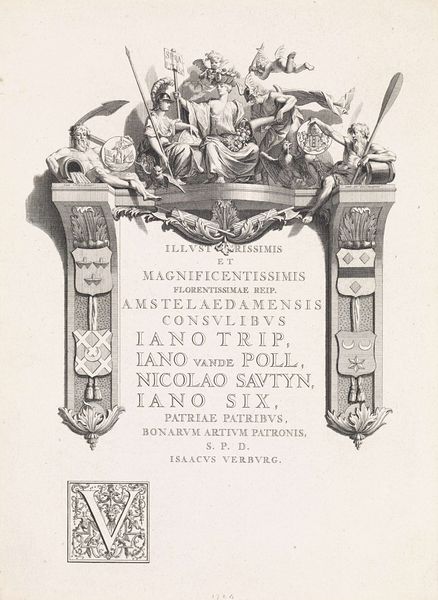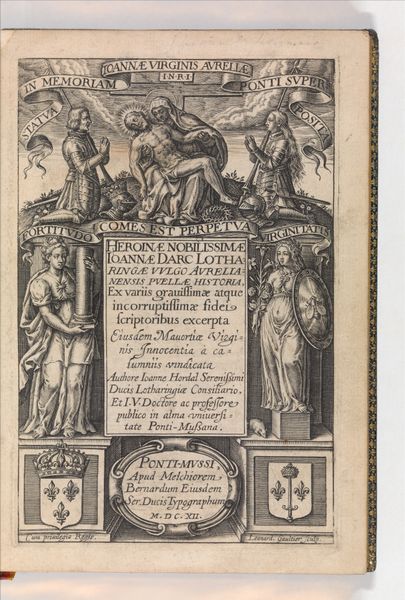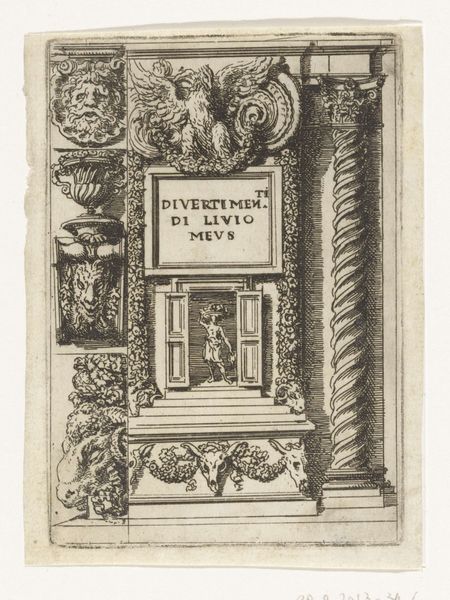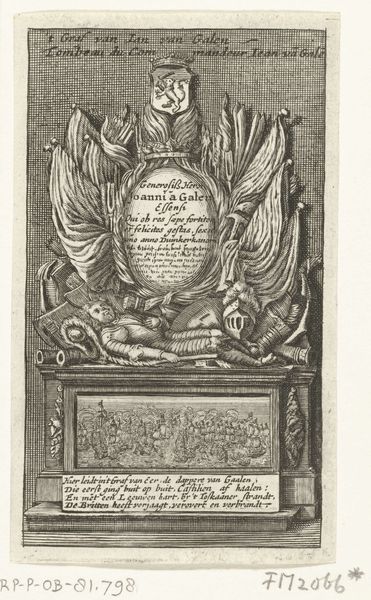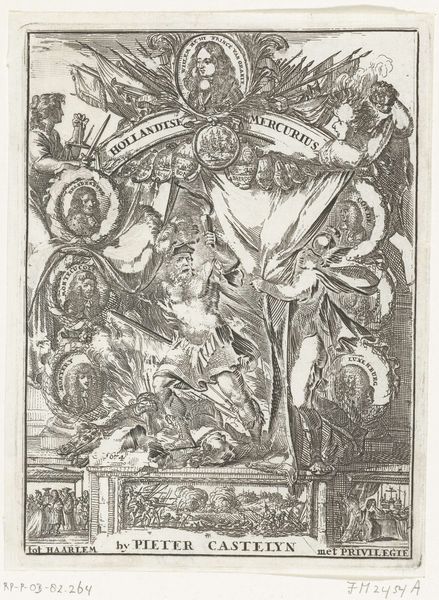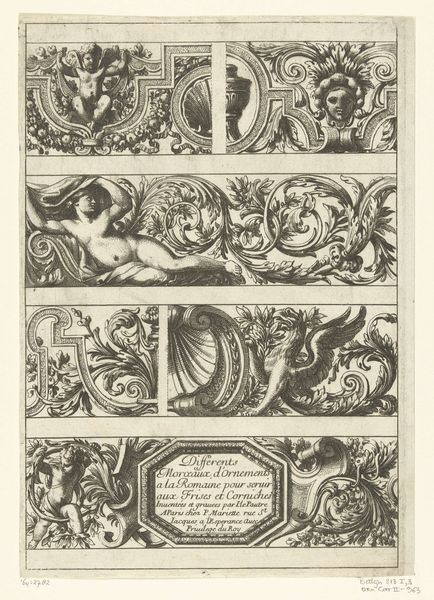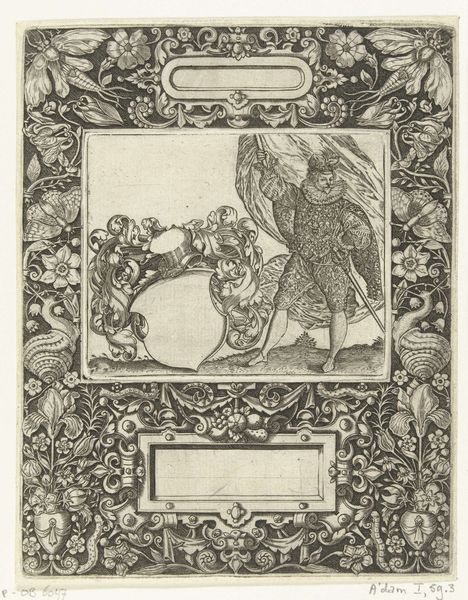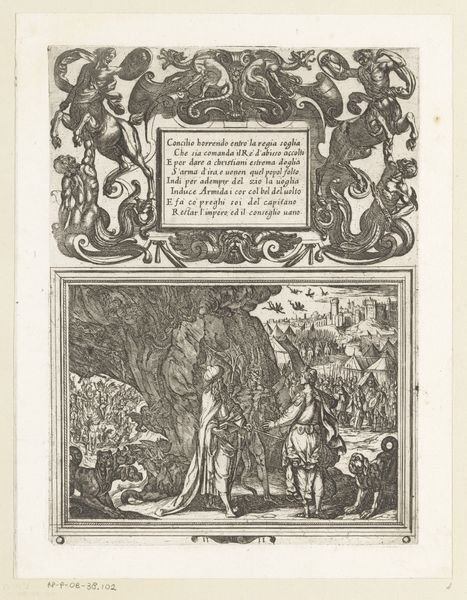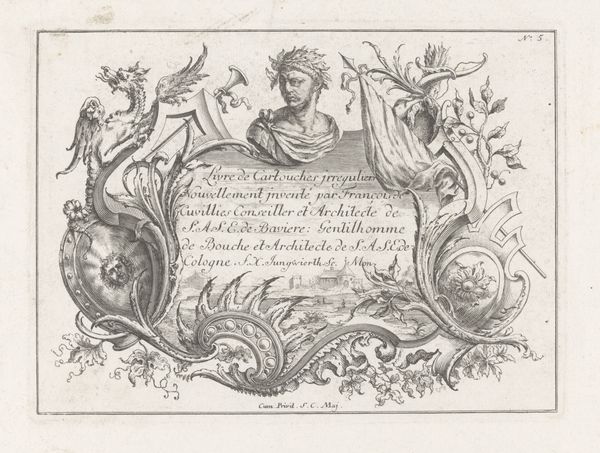
print, engraving
# print
#
mannerism
#
11_renaissance
#
history-painting
#
decorative-art
#
engraving
Dimensions: height 93 mm, width 91 mm
Copyright: Rijks Museum: Open Domain
Curator: Here we have "Hoekcartouche met halve fruitmand," or Corner Cartouche with Half Fruit Basket. It’s an engraving from around 1587 to 1590, dating it firmly to the Renaissance, although some might even consider it early Baroque. The artist remains anonymous. Editor: It feels decidedly *un*fruitful, doesn’t it? I mean, all that heavy ornamentation surrounding a dense block of Latin text… it's oppressive! Curator: Oppressive perhaps, but undeniably Mannerist in its decorative excess. That tension between form and function is absolutely key. We’re not looking at something meant to be *used*, exactly. It’s meant to impress, to convey status. Look at that fantastical creature on the lower left corner. Editor: A grotesquery for sure! But to *whose* benefit does it all redound? Look at that text! That must be a dedication... to someone named Iacobo Monavio Silesio Patricio Vratislaviensi. Likely a person of status, given all the honorifics. Silesia connects him with Poland. Curator: Right, but the engraving itself serves as a "monument of mutual friendship" by Abraham Ortelius, presumably the dedicatee. It's all about networks, connections, and, let’s face it, male bonding. A celebration of erudition in very ornate form. Editor: The patriarchal dimensions can’t be ignored. Inscribing friendships of scholarly men seems a calculated declaration to preserve the power of their names for posterity. Note how only his first name, "Abrahamvs," is referenced, and "Ortelivs" sounds very Latinised for the purpose of formal introduction. Curator: So, a celebration of power, yes, but one framed by humanism, of Renaissance friendship, even within constraints of masculine culture. See how the fruits erupt in the form of ornamentation around the corner? It gives the engraving life! Editor: And yet, I find myself wanting to liberate this small portion from its original context! It feels trapped, somehow. Its dense symmetry does, however, offer an aesthetic perspective that transcends cultural biases and temporal strictures. Curator: I see it differently! As a fragment of its original setting it presents a tantalising narrative on human relations.
Comments
No comments
Be the first to comment and join the conversation on the ultimate creative platform.

